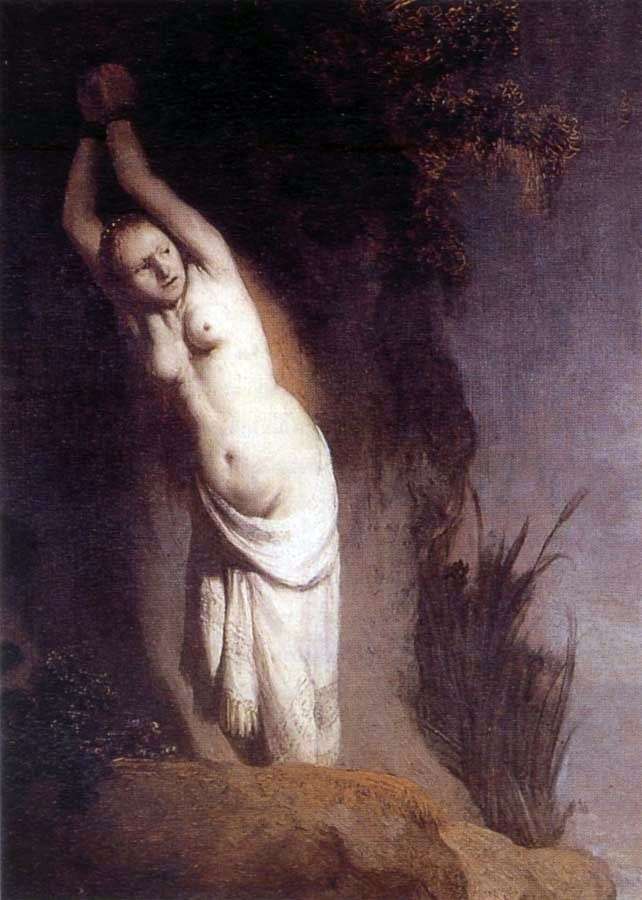
Painting of the Dutch artist Rembrandt van Rijn “Andromeda”. Painting size 34 x 24 cm, oil on canvas. The dating of this small picture of mythological themes depicting the ancient Greek heroine is by no means beautiful, is not precisely defined. Most researchers of the Dutch artist are inclined to believe that Rembrandt painted the painting “Andromeda” at the turn of the 1630s or so.
Rembrandt began in his work, which is very important, not as a narrator of his modern life, but as a historical painter. The burgher pride of the United Provinces for conquests and achievements, freedom and wealth, nation, homeland and hearth, has long required, after the rise of the past decades, its appropriate incarnation in art, which, in this case painting, followed this requirement.
Modernity-related, convincingly real themes in Holland were at their disposal specializing in various genres of painting. Its naturalism, mastering and beating up everyday life, was promoted by the hostile attitude of Calvinism to the paintings, which, unlike Catholicism, did not encourage church orders and religious dedication in art.
Rembrandt, a student of Lastman, whose work, based on historical plots, was formed from a peculiar synthesis of German-Dutch and Italian influences, Rembrandt from the very beginning turns to mythological and historical-religious plots, throughout his life the biblical story remains for him a central theme. In it, Rembrandt finds his parables, expressing them in a unique, turned to modernity and with a look that penetrates into the future, creativity.
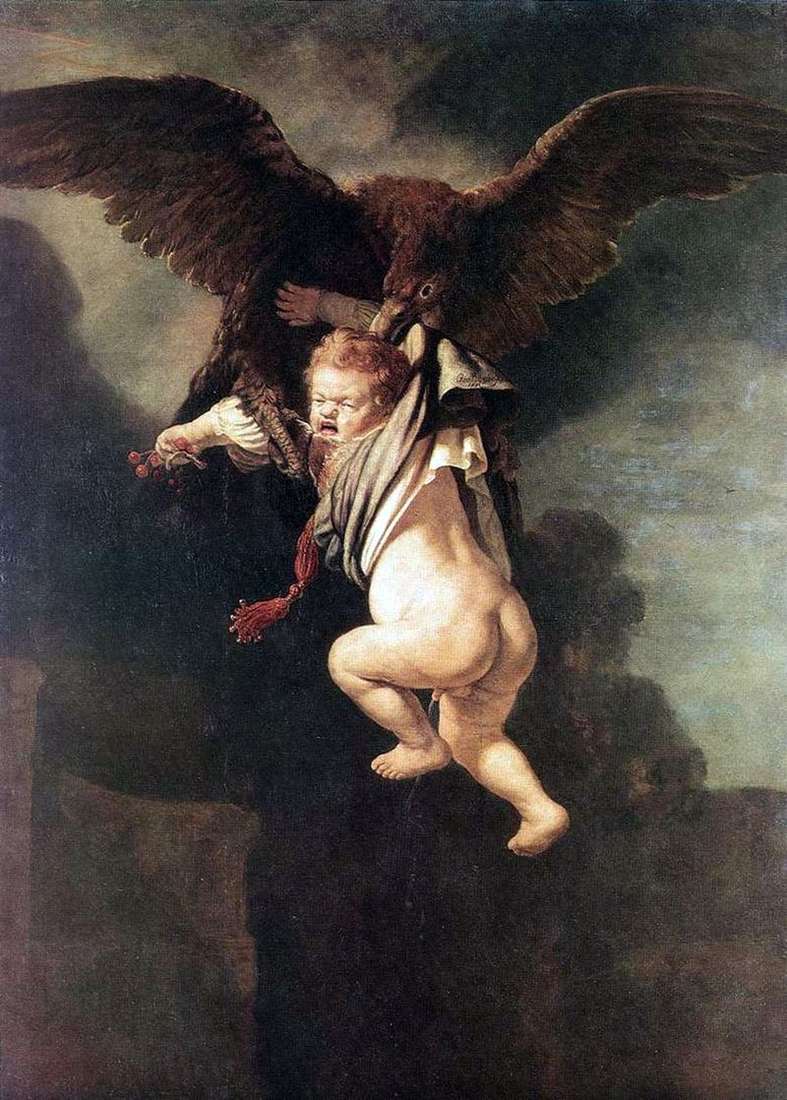 The Abduction of Ganymede (Ganymede in the Claws of an Eagle) by Rembrandt Harmens Van Rhine
The Abduction of Ganymede (Ganymede in the Claws of an Eagle) by Rembrandt Harmens Van Rhine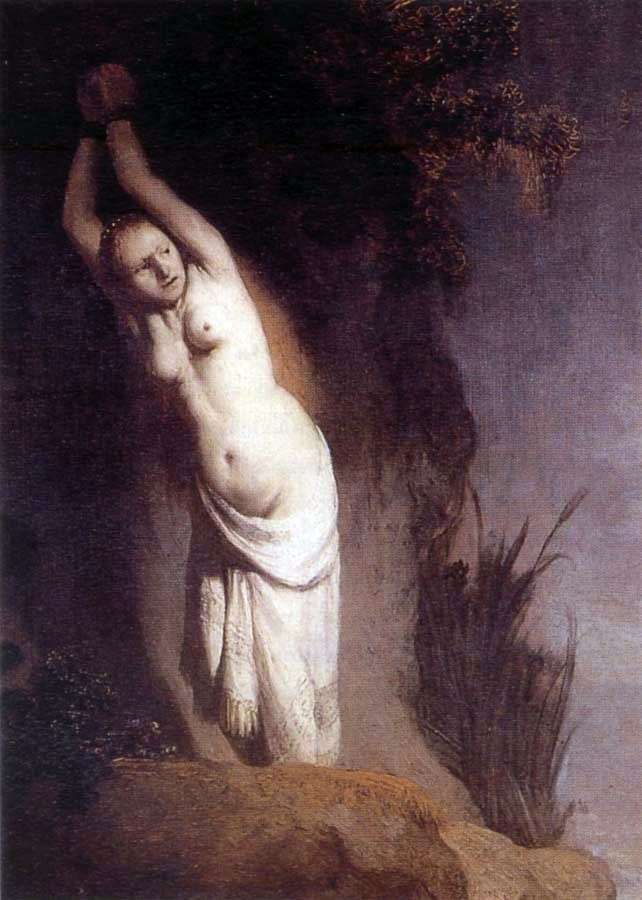 Andrómeda – Rembrandt Harmens Van Rhine
Andrómeda – Rembrandt Harmens Van Rhine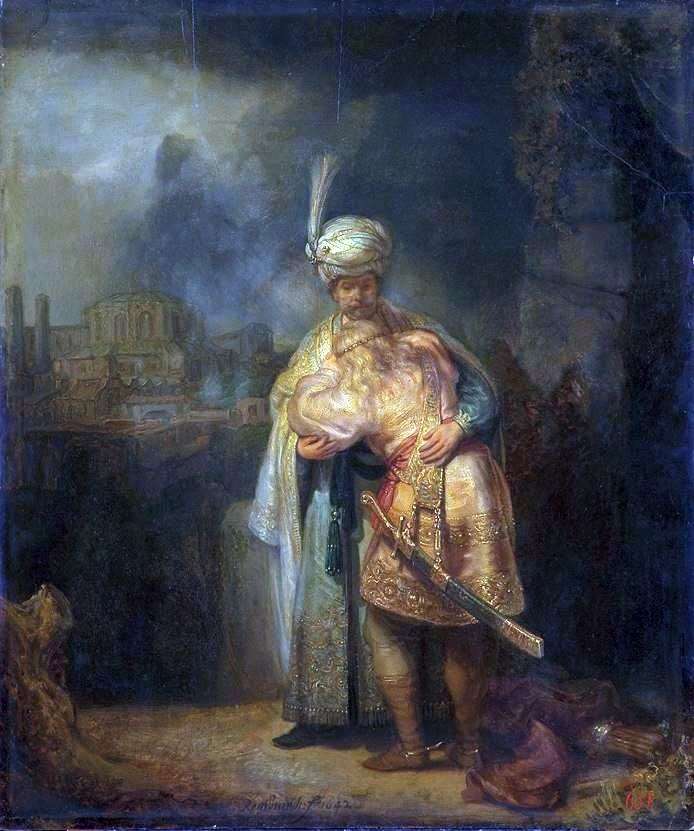 David and Jonathan by Rembrandt Harmens Van Rhine
David and Jonathan by Rembrandt Harmens Van Rhine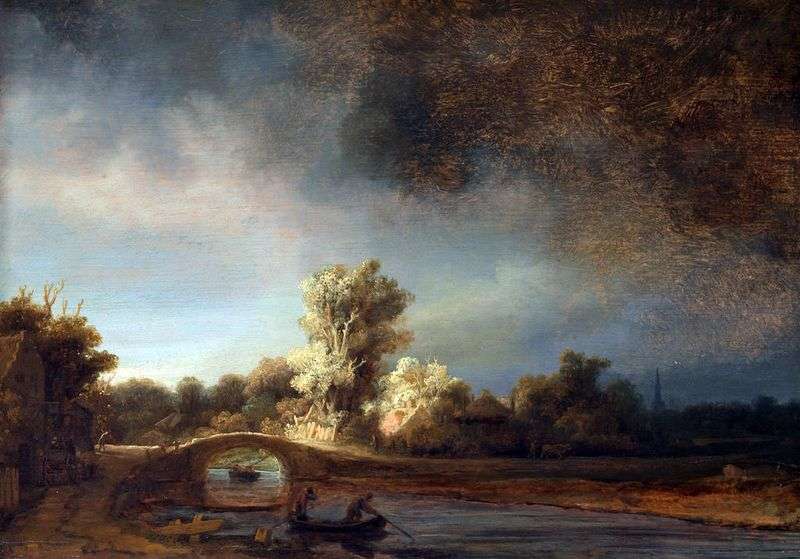 Stone Bridge by Rembrandt Harmens Van Rhine
Stone Bridge by Rembrandt Harmens Van Rhine The Parable of the Rich Man by Rembrandt Harmens Van Rhine
The Parable of the Rich Man by Rembrandt Harmens Van Rhine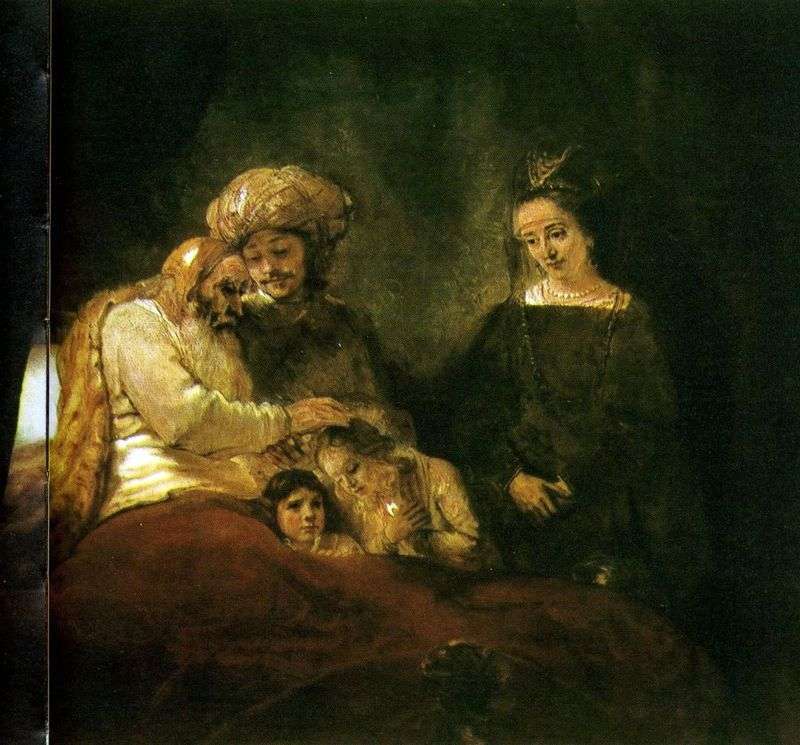 Jacob’s Blessing by Rembrandt Harmens Van Rhine
Jacob’s Blessing by Rembrandt Harmens Van Rhine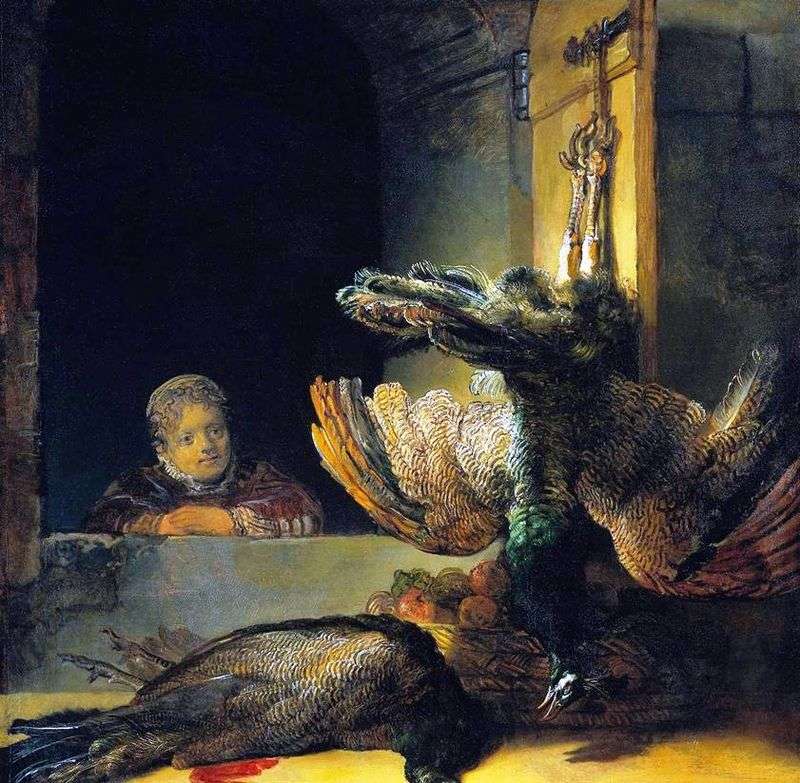 Still Life with Peacock by Rembrandt Harmens Van Rhine
Still Life with Peacock by Rembrandt Harmens Van Rhine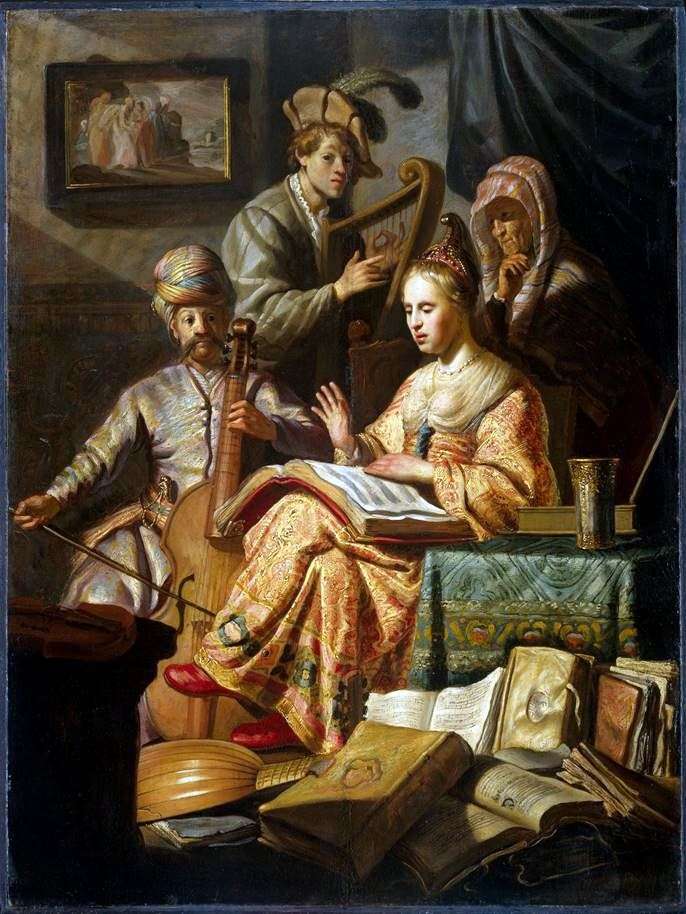 Allegory of Music by Rembrandt Harmens Van Rhine
Allegory of Music by Rembrandt Harmens Van Rhine